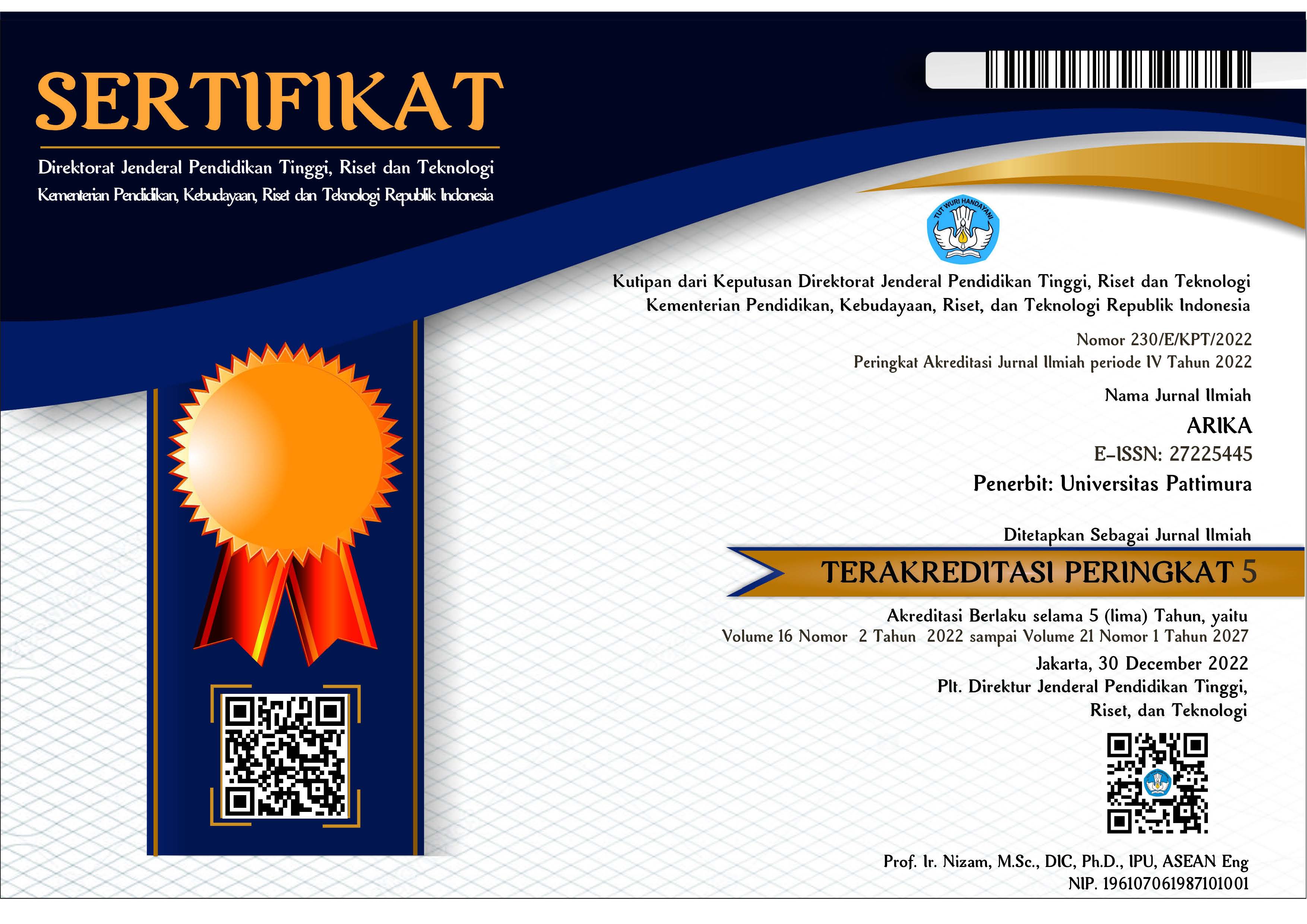Analisis Kebutuhan Transportasi Penyeberangan Pada Lintasan Waipirit-Hunimua
Abstract
Transportation needs of the crossing to the island of Ambon, Seram Island in path-Hunimua Waipirit since 2005 shows an increasing trend. Based on data from PT. Ferry Indonesia (Persero) Branch Ambon, since 2005 the flow of cargo through the track has experienced an average increase of 2.799% per year for passengers, 11.389% for 2 wheel vehicles, and 10.412% for 4-wheel vehicles. However, this trend is not followed by infrastructure development and operation patterns in anticipation of an imbalance between aspects of the provision and utilization aspects of ferry transport services, so that the average queuing time at Port can reach 3-5 hours. This study examines pedestrian transportation needs and to design the pattern of development by considering the operational and conceptual design of the existing ferry ports. The results showed transportation demand forecasting model for crossing the track Waipirit-Hunimua until 2014 was Y = 273,680.00 + 46,114.80 X for Passengers, Y = 76155.40 + 17381.00 X for Vehicle Wheels 2, Y = 35053.40 + 7191 , 70x for Vehicle Wheels 4. For that, the proposed operational pattern consists of 4 ships that sail the 16 trips per day on 2 lines, with a circulation time of 12 hours per day so the BOR by 50% and load factor can be optimized (reached 97% in 2014). On the ground facilities, the Port Terminal Building Waipirit need to develop an area of 11.43 m2 and the Areal Vehicle Parking area of 519.96 m2. While in port Hunimua, covering an area of 258.43 m2 Terminal Building and Parking Area covering an area of 578.44 m2
Downloads
An author who publishes in the ARIKA Jurnal agrees to the following terms:
- The author retains the copyright and grants ARIKA journal the right of first publication of the work simultaneously licensed under the Creative Commons Attribution-ShareAlike 4.0 License that allows others to share the work with an acknowledgment of the work's authorship and initial publication in this journal.
- The author is able to enter into separate, additional contractual arrangements for the non-exclusive distribution of the journal's published version of the work (e.g., post it to an institutional repository or publish it in a book) with the acknowledgment of its initial publication in this journal.
- The author is permitted and encouraged to post his/her work online (e.g., in institutional repositories or on their website) prior to and during the submission process, as it can lead to productive exchanges, as well as earlier and greater citation of the published work (See The Effect of Open Access).










